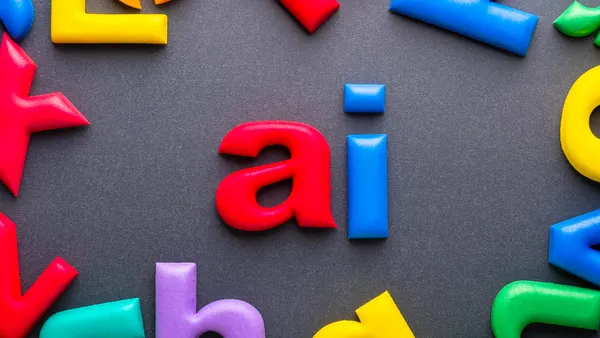Dive Brief:
- While personalized learning technologies can make for new, more innovative ways for students to grasp concepts, it sometimes boosts the efficiency of circulating materials without modifying or redefining the actual learning experience, National Board-certified teacher Paul Emerich France writes in EdSurge.
- The SAMR model – which stands for substitution, augmentation, modification and redefinition – helps teachers adapt technology into their classrooms, but France says many personalized learning programs are limited to the substitution or augmentation realm. Google Docs, however, is an example of something that changes the way students collaborate and communicate, thus incorporating the modification and redefinition pillars.
- The SAMR model, France writes, might not be enough guidance in considering what technologies to use. It's also important to be critical and ask other questions: Does it help minimize complexity, does it maximize learners' power and potential, does it help do something previously unimaginable, and does it preserve or enhance human connection in the classroom?
Dive Insight:
Personalized learning models continue to grow as educators nationwide are tasked with reinventing the way students are taught and tested. Meanwhile, the technological revolution keeps producing gadgets that make life easier by simplifying once-complex tasks, and this wave of innovation and invention has inevitably seeped into the educational bubble. Put those two things together, and you've got personalized learning technologies.
When fancy, new technology is unveiled, it's sometimes hard for educators to resist the desire to get their your hands on it. The equipment is seen as a way to make things faster, easier and better. But tools like Microsoft Word and PowerPoint aren't sophisticated enough to enhance this type of learning, because they simply make tasks easier and more efficient without fundamentally changing the task itself, France writes. Google Docs, on the other hand, does fundamentally change a task. By letting multiple people access and edit a document at the same time from anywhere in the world, the nature of communicating and collaborating are not just more efficient and effective, but they're also fundamentally changed by the release of this technology.
Technology makes life easier most of the time, but it also takes away the humanity of assignments or interactions. Part of personalized learning is losing the one-size-fits-all approach and examining ways to measure non-academic subjects, such as creativity and other soft skills. But if technology dominates the learning sphere and lowers the frequency of one-on-one conversations between teachers and students, or pushes students to spend more time staring at a screen than talking with their peers, this machinery is arguably doing them a disservice.
Supporting the implementation of technology for learning and opposing some personalized learning technologies aren't necessarily mutually exclusive. It is possible to disagree with integrating a certain piece of equipment into a school and also be an advocate of technology because, as France says, "it’s not the technology itself that personalizes learning: It’s how the tool is used in the classroom." Having a thoughtful yet critical mindset is key when considering what technology to incorporate into a classroom or its curriculum, but it's also important to keep parents in the loop and support those educators face a learning curve.











